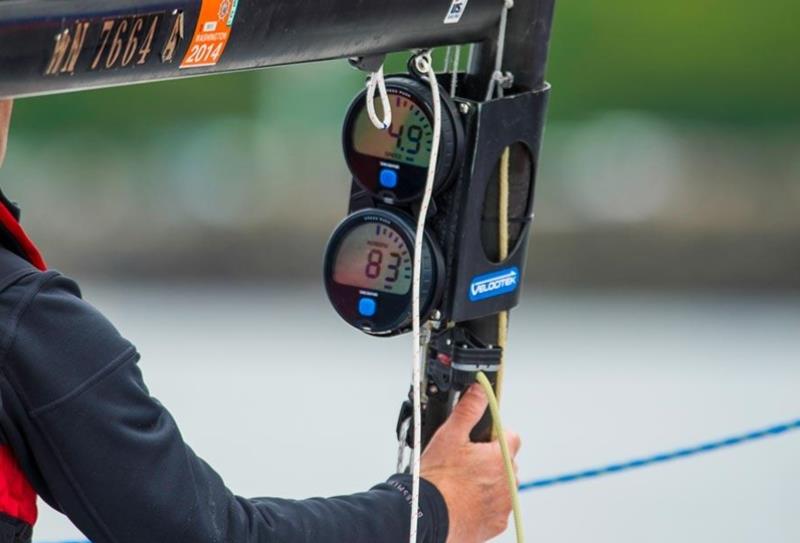
Transform your sailing with the Velocitek Speedpuck
by Kerri Robson 29 Aug 2019 01:00 PDT

Velocitek Speedpuck in use © Paul Todd /
www.outsideimages.com
Located on the North shore of Hawaiian island Maui, Velocitek are a marine electronics firm who are - amongst other things - passionate about spending time on the water.
When they're not busy sailing or surfing - or fighting for the protection of our lakes and oceans - Velocitek work hard to design beautifully simple, intuitive and elegant marine electronics with top flight functionality, helping sailors of all levels to enjoy peak performance on the water.
One such instrument is the award winning Velocitek Speedpuck. As the name suggests, the Speedpuck is a responsive, digital speedometer which utilises the same GPS technology as the America's Cup-endorsed Velocitek Prostart. Although suitable for boats of all sizes, the Speedpuck is known to particularly flourish on dinghies and one-design keelboats.
As opposed to a conventional paddle wheel, the Speedpuck speedometer calculates accurate speed by measuring the Doppler shift of GPS signals, providing a reading that is updated twice a second. As a result, the Speedpuck does not need to be calibrated, and a speed accuracy of ±0.2 knots is maintained at all speeds
The lightweight and compact speedometer - which weighs just 295g (including batteries) - has three possible speed modes, that can be toggled with the press of a single, large button.
Speed Mode:
- Speed and wind shift indicator. Updated twice a second.
- Can be disabled if prohibited by class rules.
Heading Mode:
- Course/heading over ground and wind shift indicator. Updated twice a second. Heading resolution: 1 degrees.
- Can be disabled if prohibited by class rules.
Maximum Speed Mode:
- Maximum 10 second average speed and/or maximum instantaneous speed.
Although primarily a speedometer, the Velocitek Speedpuck takes full advantage of its superior GPS technology with its automatic tracking wind shift indicator; having sailed on the same tack for 20 seconds, the indicator will display any deviations from the mean heading of your tack using a simple bar graph system, in which each bar represents 3 degrees. This feature then automatically resets after each new tack or gybe.
One of Velocitek's principal philosophies is to create instruments that 'never distract, frustrate or hurt performance'. The Speedpuck's high contrast, sunlight readable LCD screen can therefore be read from anywhere in your boat, no matter your vision. Speed is displayed in large digits that are 27mm tall, in a simple font that has been optimised for readability.
As well as easy to read, the Speedpuck speedometer is also easy to use; designed to be so simple that it can be used without an instruction manual, installation of the Speedpuck is complete in a matter of minutes with no tools required.
Powered by three AA batteries, the Velocitek Speedpuck is durable and reliable - simply stick in the batteries, screw on the watertight back (which enables the speedometer to be water resistant up to 10 foot) and turn it on.
But how can the Speedpuck improve your sailing?
The Speedpuck speedometer is a beautifully simple and valuable piece of kit to use on board to advance your sailing skills. Out on the water, detect minor changes that would otherwise go unnoticed - such as a half knot change in speed - and use this information to combat crew errors or to get out of unfavourable currents.
Back on shore, use the 20 hours of logged data to reflect on what went well, what could have been done better and to compare performance with past sailing outings. The Velocitek Speedpuck logs data such as latitude, longitude, time, speed and heading at 2 second intervals.
Convinced a Speedpuck would help you raise your game? Pick one from upffront here
Box Includes: Velociteck SpeedPuck, USB Cable, Sticker, Quick Start Guide, Lanyard, Mounting Cradle.
Or, do you have any questions about marine electronics? Use the upffront.com contact form.